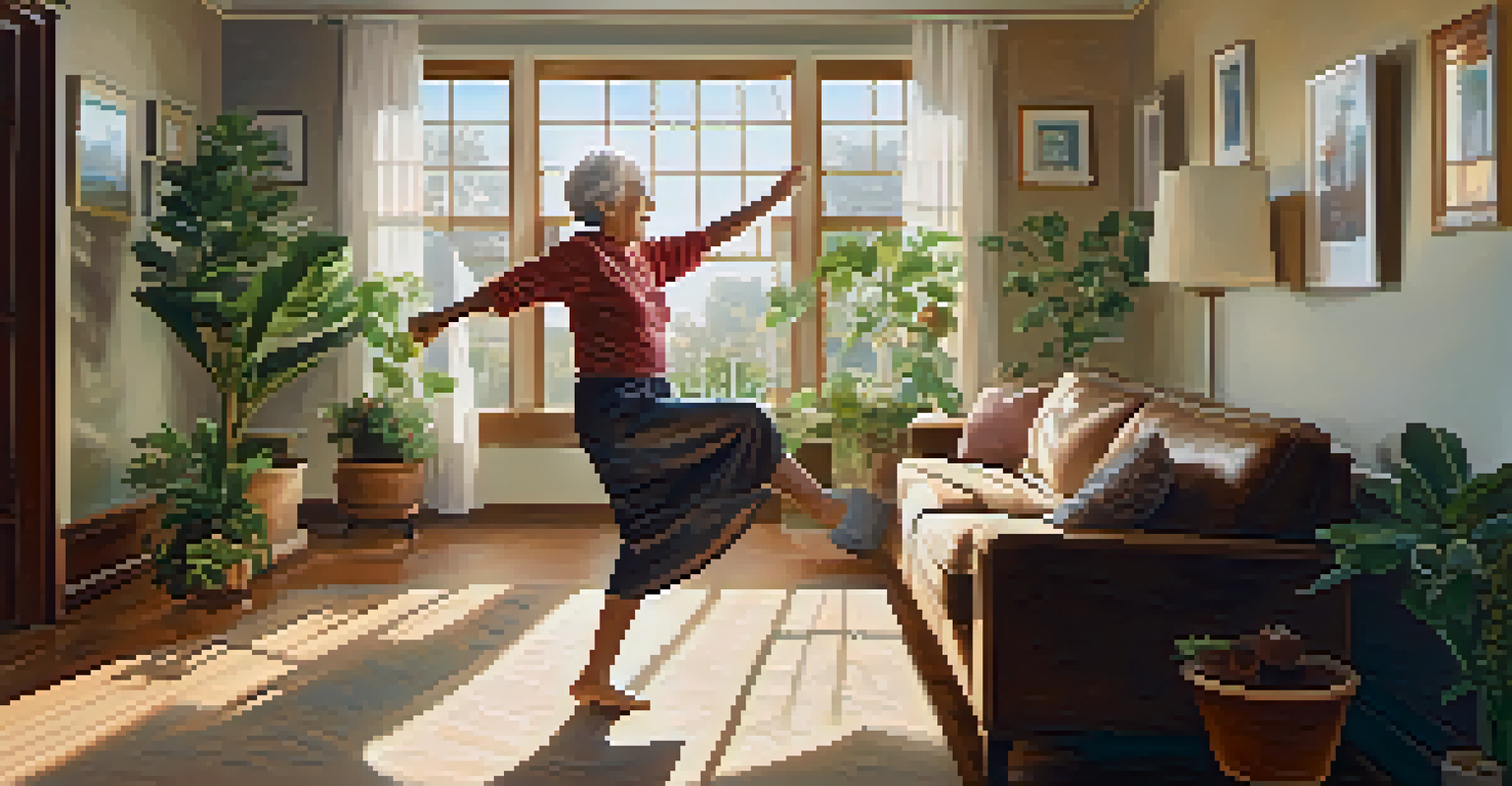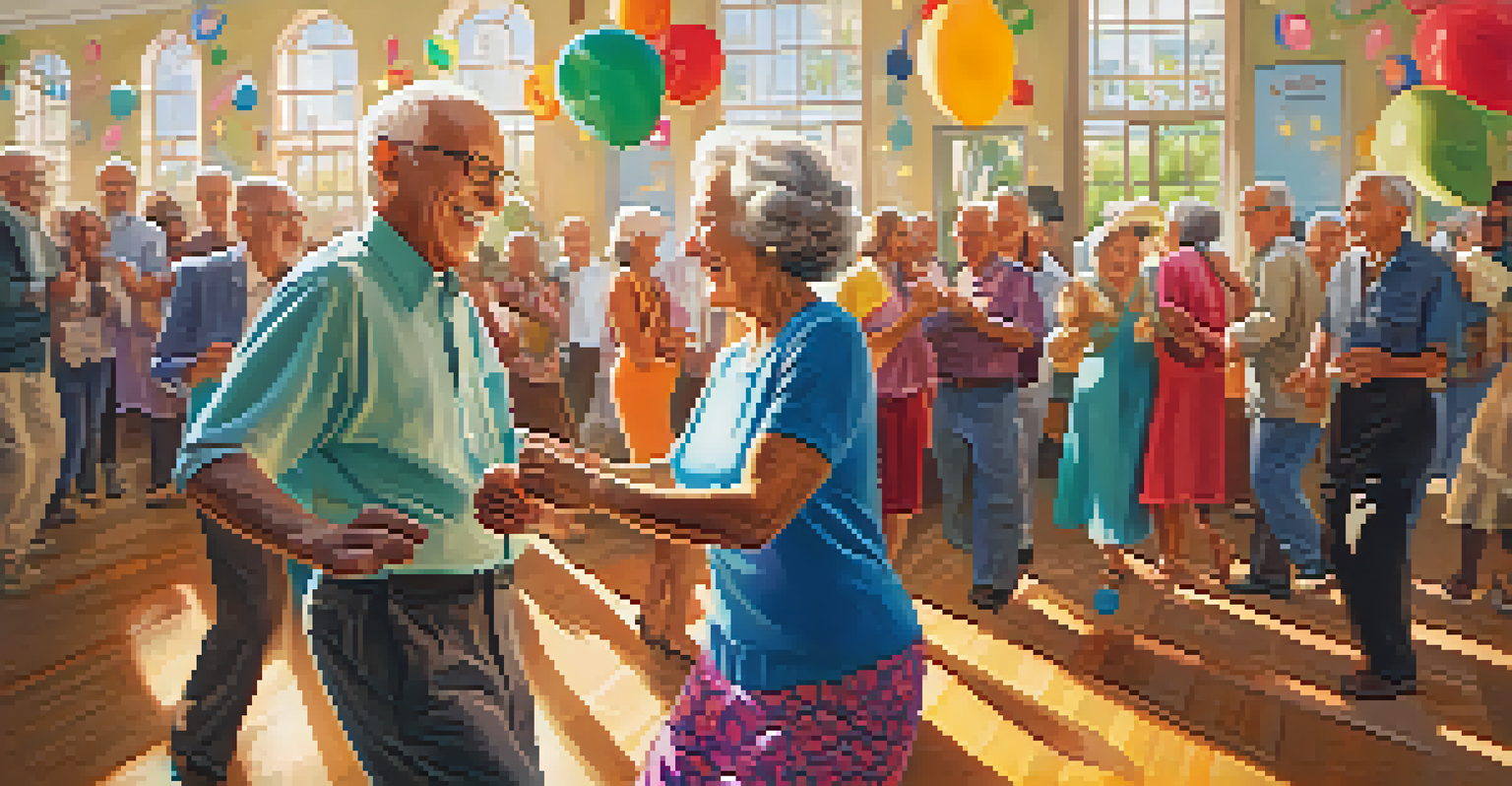Dance and Neuroplasticity: Impact on Aging Adults' Memory

Understanding Neuroplasticity and Its Importance
Neuroplasticity refers to the brain's ability to reorganize itself by forming new neural connections throughout life. This remarkable quality allows individuals to adapt to new experiences, learn new information, and recover from injuries. For aging adults, promoting neuroplasticity is crucial since it directly impacts cognitive functions, including memory.
Dance is the hidden language of the soul.
As we age, cognitive decline can become a concern, leading to conditions like dementia or Alzheimer’s disease. Engaging in activities that stimulate the brain is essential to maintain mental agility. Neuroplasticity plays a significant role in counteracting these age-related changes, helping to keep memory and cognitive skills sharp.
One of the most enjoyable ways to foster neuroplasticity is through dance. By combining physical movement with rhythm and coordination, dance offers a multidimensional challenge for the brain, encouraging it to form new connections and pathways.
The Cognitive Benefits of Dance for Older Adults
Dance is not just a form of artistic expression; it also serves as an effective cognitive exercise. When older adults participate in dance, they engage various mental processes, including memory recall, pattern recognition, and spatial awareness. This comprehensive mental workout can significantly enhance cognitive functions.

Research has shown that older adults who dance regularly demonstrate better memory retention and improved problem-solving skills compared to their sedentary peers. The combination of physical activity and social interaction in dance helps create a stimulating environment for the brain.
Neuroplasticity Enhances Brain Health
Engaging in activities that promote neuroplasticity, like dance, is crucial for maintaining cognitive functions and memory as we age.
Additionally, dance encourages creativity and self-expression, allowing individuals to explore their emotions and thoughts. This emotional engagement can further enhance memory and cognitive flexibility, providing a well-rounded benefit for aging adults.
How Dance Classes Foster Social Connections
Participating in dance classes offers more than just physical and cognitive benefits; it also fosters social connections among participants. For many aging adults, social isolation can be a significant concern, impacting both mental health and memory. Dance classes provide a lively environment where individuals can meet others and build friendships.
The brain is like a muscle. When it is in use, we feel very good. It is the use of the brain that makes us feel good.
Social interaction is a crucial element in promoting neuroplasticity. Engaging with others stimulates the brain, keeps it active, and enhances emotional well-being. The community aspect of dance encourages older adults to stay connected, which is vital for maintaining mental health.
Moreover, these social connections provide emotional support, which can help mitigate feelings of loneliness and depression. When older adults feel more connected, they are likely to engage more actively in cognitive-stimulating activities, further supporting their memory health.
Types of Dance That Benefit Memory and Cognition
There are various dance styles that aging adults can explore, each offering unique cognitive benefits. For instance, ballroom dancing requires partners to communicate non-verbally, enhancing social skills and memory. This style also promotes coordination and rhythm, which are excellent for cognitive engagement.
Another beneficial form is line dancing, which emphasizes memorizing sequences and patterns. This repetitive practice strengthens memory and encourages focus, making it an ideal choice for those looking to improve cognitive functions. Additionally, improvisational dance encourages spontaneity, which can stimulate creativity and brain flexibility.
Dance Boosts Cognitive Abilities
Regular participation in dance improves memory retention and problem-solving skills, providing a comprehensive mental workout.
Ultimately, the best dance style is one that resonates with the individual. Whether it's salsa, swing, or even folk dancing, the key is to enjoy the movement, engage the mind, and connect with others.
Incorporating Dance into Daily Routines
Incorporating dance into daily routines doesn’t have to mean joining a formal class. Simple practices such as dancing at home to favorite songs can be incredibly beneficial. This informal approach allows aging adults to enjoy movement at their own pace while still stimulating their brains.
Setting aside a few minutes each day for dance can serve as an enjoyable break from routine tasks. Even simple movements, like swaying or stepping side to side, can engage the body and mind, promoting neuroplasticity. The key is to make it fun and light-hearted.
Additionally, community centers or local organizations often offer dance sessions tailored for seniors. These classes not only provide structured learning but also create opportunities for social interaction, further enhancing the cognitive and emotional benefits of dance.
Real-Life Success Stories: Dance and Memory Improvement
Many aging adults have experienced significant improvements in memory and cognitive function through dance. For example, a community dance program in a retirement home led to residents showing enhanced recall abilities and overall mental sharpness. Participants reported feeling more engaged and alert after joining the classes.
Another inspiring story involves a woman in her seventies who took up swing dancing. Not only did she make new friends, but she also noticed a marked improvement in her memory and ability to learn new dance steps. The joy and laughter shared during these sessions acted as a natural antidepressant, boosting her overall mood.
Social Connections Through Dance
Dance classes foster social interactions that are vital for mental well-being and can help combat feelings of loneliness in aging adults.
These real-life examples highlight that dance is not just a physical activity; it can be a transformative experience that supports memory and cognitive health in aging adults. By sharing these stories, we can inspire others to dance their way to better brain health.
Conclusion: Dance as a Pathway to Cognitive Wellness
In conclusion, dance offers a multifaceted approach to enhancing memory and cognitive function in aging adults. By promoting neuroplasticity through movement, rhythm, and social interaction, dance can serve as a powerful tool against age-related cognitive decline. It’s an enjoyable activity that can easily be integrated into daily life.
Emphasizing the importance of mental engagement and physical activity, dance encourages a holistic approach to wellness. As aging adults discover the joy of dance, they not only improve their cognitive health but also enrich their social lives.

Ultimately, the dance floor is more than just a place for fun; it’s a vibrant space for fostering connections, enhancing memory, and celebrating life at any age. So, put on your dancing shoes and let the rhythm guide you to a healthier, happier mind!